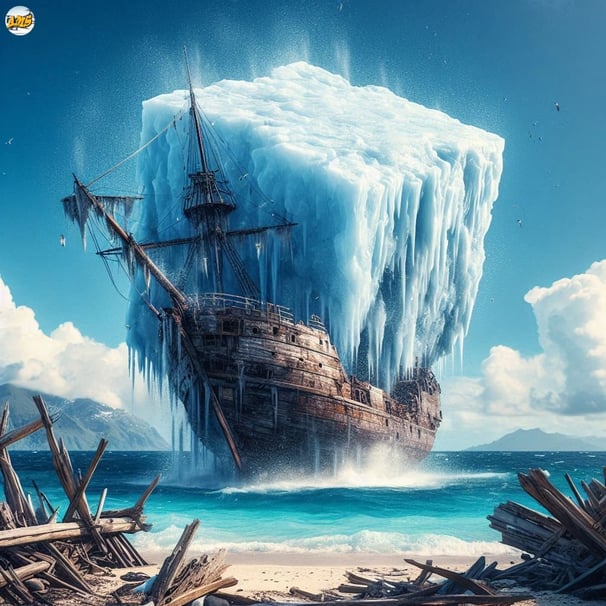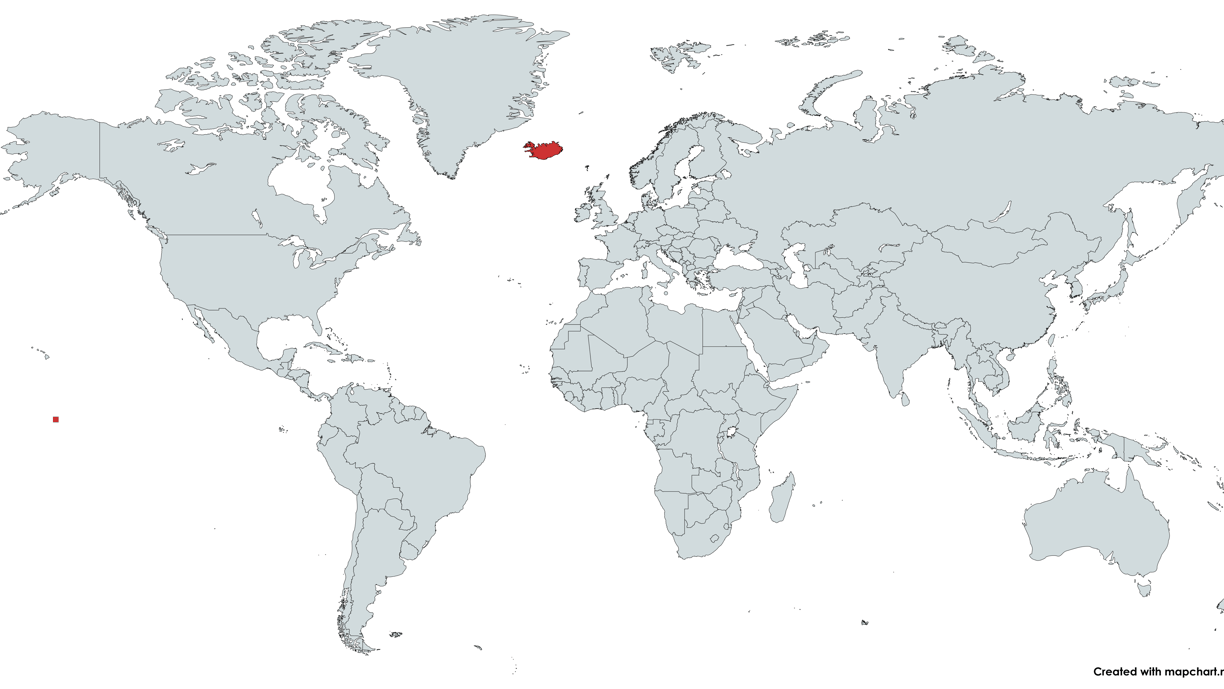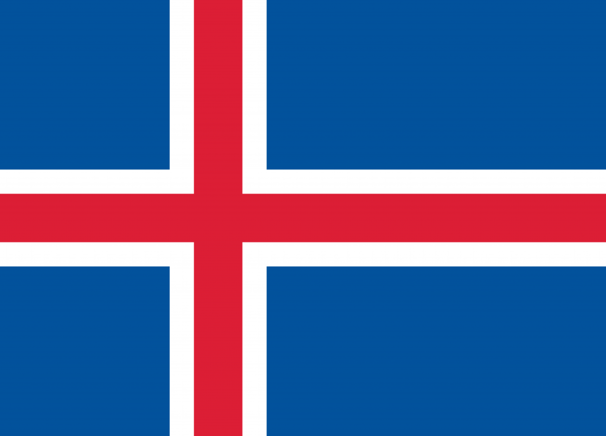
Reykjavic, Iceland
When blocks of Ice Land, just one could wreck a ship.
Memory Aid: Picture a block of ice landing on a ship an wrecking it as it lands . Wreck a ship sounds like Reykjavik and ice land like Iceland.
Association: Associate a big block of ice and a ship.


Where in the World is Iceland?


The Flag of Iceland


What to do and where to visit in Reykjavik
As a new visitor to Reykjavik, you’ll find plenty to explore in this vibrant city.
Start your adventure at Hallgrímskirkja, the iconic church that offers stunning panoramic views from its tower.
Afterward, wander through the charming streets of the downtown area, where colorful houses and boutique shops await. Don’t miss the Harpa Concert Hall, a beautifully designed building that hosts a variety of cultural events.
For a taste of local culture, visit the National Museum of Iceland to learn about the country’s rich history.
If you’re keen on experiencing the legendary nightlife, explore the numerous bars and cafés that come alive after dark.
Finally, take a stroll along the waterfront to enjoy the breathtaking views of the surrounding mountains and the ocean, completing your Reykjavik experience.
What Countries border Iceland?
Iceland is an island nation located in the North Atlantic Ocean and does not share land borders with any other countries.
Its nearest neighbors are Greenland to the west and the Faroe Islands to the southeast.
Historically, Iceland has experienced few conflicts with its neighbors, as it has maintained a peaceful stance since gaining independence from Denmark in 1944.
However, during the Cold War, Iceland played a strategic role due to its location and was a member of NATO, which sometimes put it at odds with other nations involved in global tensions.
Additionally, fishing rights in the surrounding waters have occasionally led to disputes with both the UK and Norway, notably during the "Cod Wars" in the mid-20th century.
Overall, Iceland's history with its neighbors remains relatively peaceful compared to many other regions in the world.
History & Politics of Iceland
Iceland has a rich history that dates back to its settlement in the 9th century, when Norse Vikings established one of the world's earliest parliaments, the Althing, in 930 AD.
Over the centuries, Iceland underwent various political transitions, including periods of Danish rule from the 14th century until it gained independence in 1944.
Today, Iceland operates as a democratic republic with a president as the head of state, and there is no monarchy. The political landscape has been shaped by its unique geography and cultural heritage, which also includes strong ties to the Nordic countries.
Iceland’s commitment to democracy and social equality is reflected in its political practices, making it a progressive and stable nation.
The absence of a monarchy is a defining feature of its governance, emphasizing the democratic principles that have evolved throughout its history.
Is it safe to visit Reykjavik?
Reykjavik, the capital of Iceland, is generally considered a safe destination for travelers. The city boasts a low crime rate, and visitors can enjoy its vibrant culture and stunning landscapes without significant concern for safety.
However, like any travel destination, certain precautions should be observed to ensure a smooth experience. It's advisable to stay vigilant of your belongings, particularly in crowded areas, and to be aware of your surroundings, especially at night.
Weather can be unpredictable, so dressing in layers and being prepared for sudden changes is crucial.
Additionally, when exploring natural attractions outside the city, follow local guidelines and consider joining guided tours to ensure safety.
By taking these simple precautions, visitors can fully enjoy all that Reykjavik has to offer.
Explore
Learn World capitals through images and associations.
© 2025. All rights reserved - Air Mobility Services
Terms of Use


